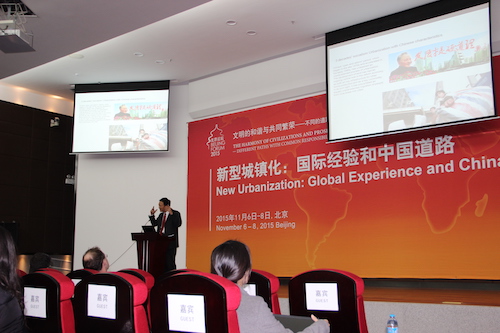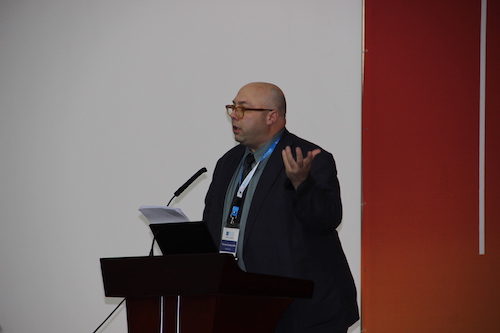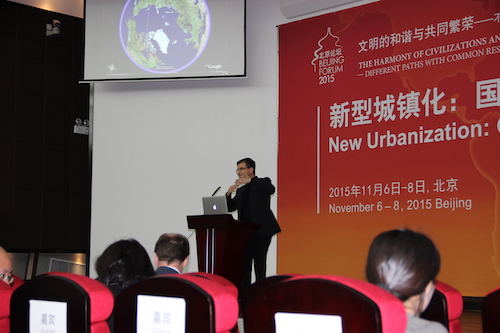On the afternoon of November 6, 2015, the first session of the Beijing Forum with the theme of “New Urbanization: Global Experience and China’s Way” was held at the Qiulin Lecture Hall in Peking University (PKU). Thomas Campanella, Associate Professor of the College of Architecture, Art and Planning of Cornell University; Li Jinkui, Member of the Council and Senior Research Fellow at the China Development Institute; Roberto Bannura, Director of Steven Holl Architects; and Xiang Weining, Professor and Director at the college of Resources and Environmental Science department of the Shanghai Key Lab for Urban Ecological Processes and Eco Restoration at the East China Normal University were invited to give presentations. Yu Kongjian, Dean and Professor of the College of Architecture and Landscape Architecture, hosted the session.

Yu Kongjian first gave a general introduction of the topic, reviewing previous Chinese urbanization efforts and attaching great significance to “a new type of urbanization” in China. Then Thomas Campanella gave a presentation around the topic of “the rise, fall and renewal of American Urbanism”. In the 20th century, as pollution and social problems gradually became more and more serious in major American cities such as New York, Boston, Philadelphia, the government began injecting rural landscapes into the heart of the cities and developing the suburban areas by building affordable houses. Additionally, the prevalence of automobiles enabled people to travel to cities from greater distances. Starting in the 1990s, with the government’s urban renewal programs, the rising generation of young people in the U.S. tended to move back into the cities, starting the process of gentrification. Mr. Campanella compared the similarities and differences between the U.S. and China in terms of urbanization and pointed out the lessons that China can learn from the U.S. experiences.

The second speaker was Li Jinkui, who introduced the development pattern of “city villages” in Shenzhen. Mr. Li has made great contributions of preserving the city villages in there. He started his presentation with the history of early Cantonese people, whom he regards as the “most traditional and westernized”. He repeatedly emphasized their spirit of finding alternatives, by which the Cantonese went through every turning point successfully in the past. He then discussed advantages of city villages, explaining that their low cost and high efficiency had allowed thousands of young people to achieve their dreams of becoming inventors and entrepreneurs.

Following Mr. Li’s remarks was Roberto Bannura, who showed the expansion, renewal, and gentrification processes of urbanization in Shenzhen, Beijing, and Chengdu. He also presented the efforts of Steven Holl Architects of relieving the problems that urbanization has created, such as creating more public spaces. And the last speaker, Xiang Weining, basically focused on the inequity of eastern and western China, separated by the famous geographical line named after the geographer Hu Huanyong. He stressed the crucial role of creativity to promote regional equity in China.
Near the end of the session, the panelists took questions from the audience.
Written by: Liu Xiya
Edited by: Wei Yuchen



